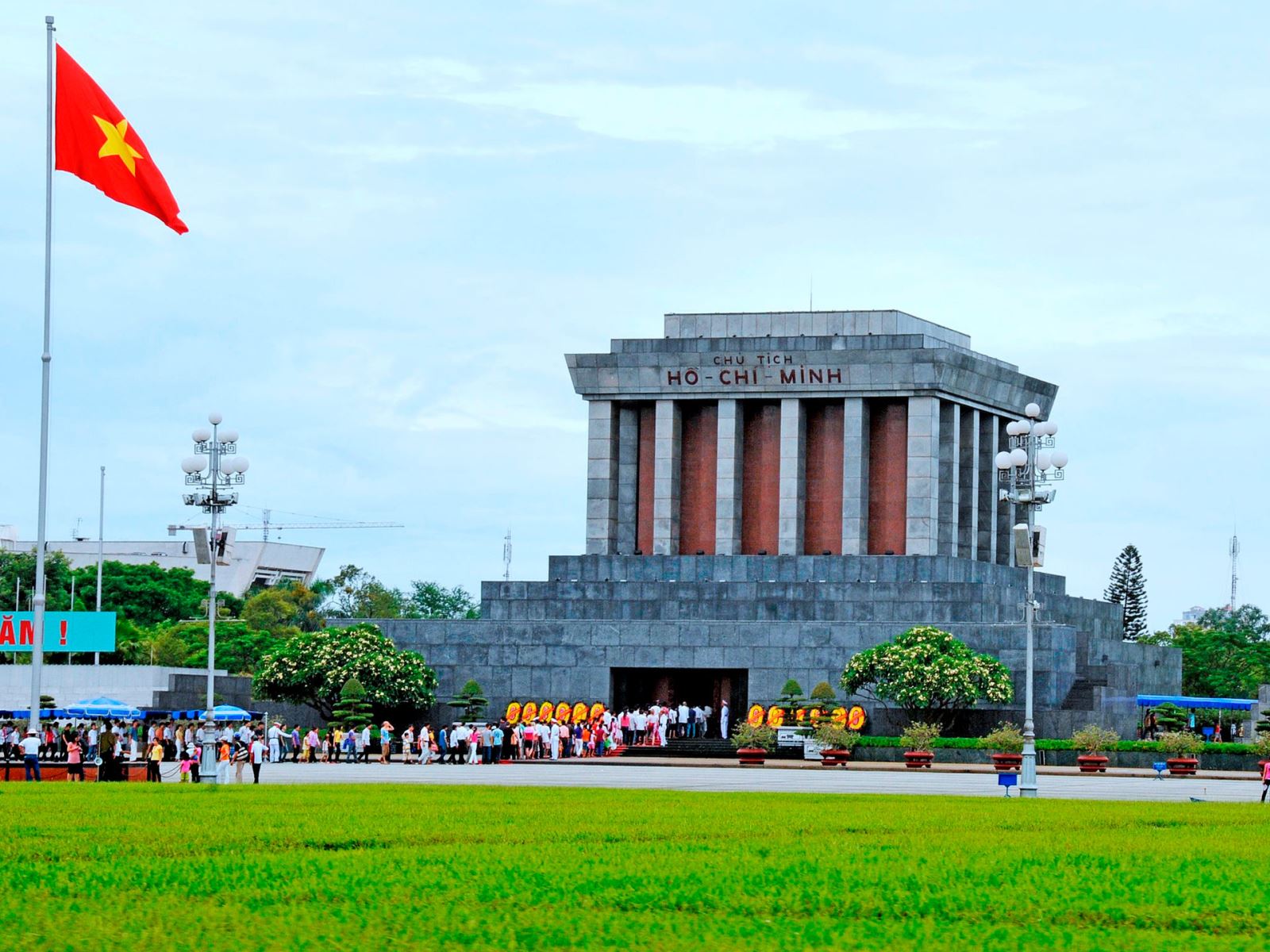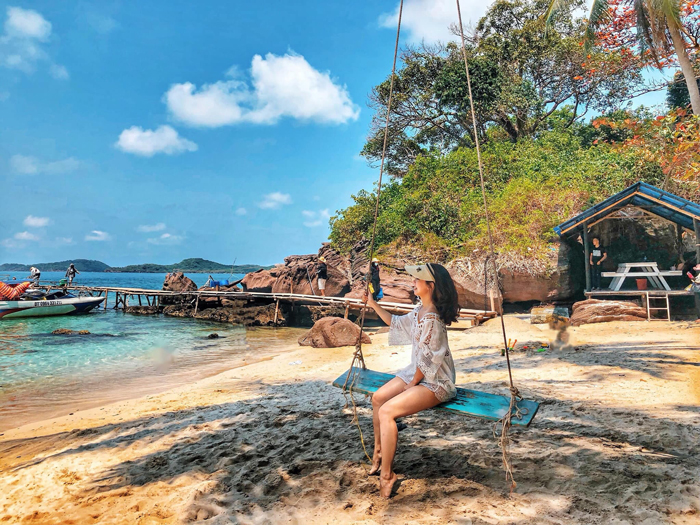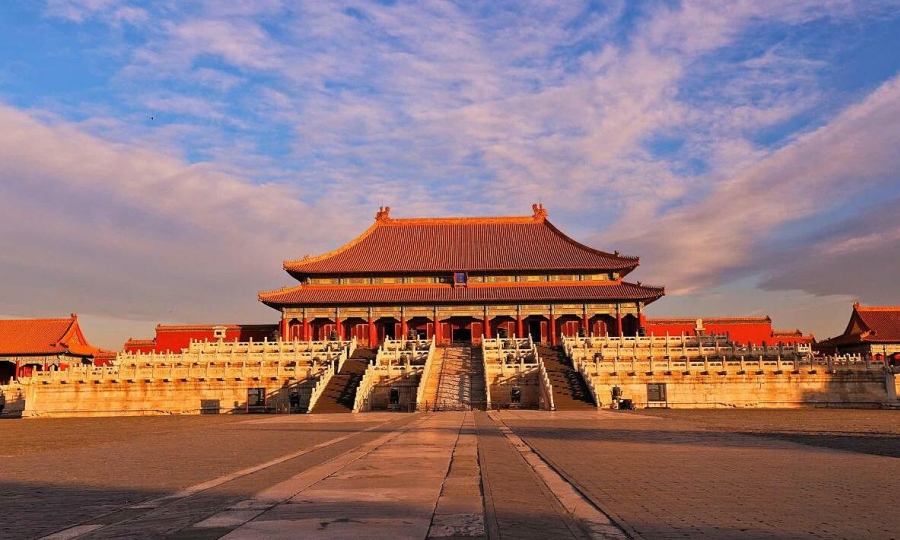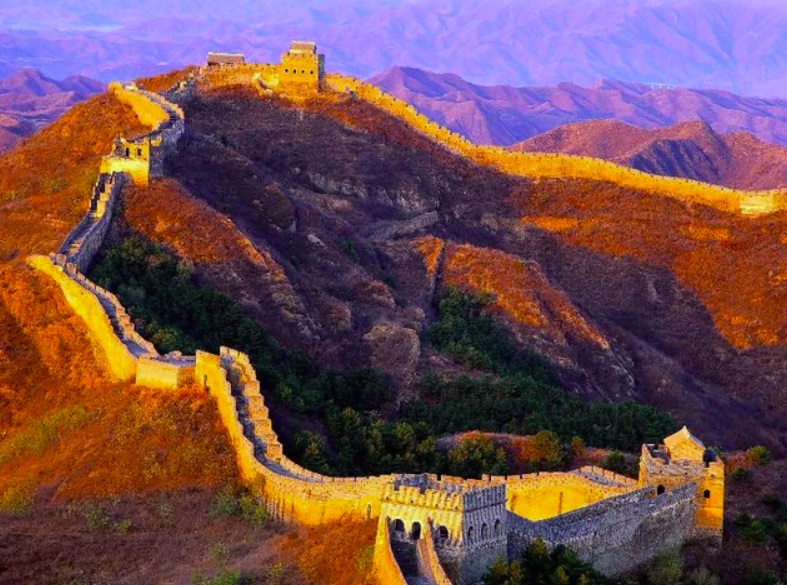Best Day Trip From Hanoi That You Can Actually Go
Hanoi, being the capital city and the northern tourism center, serves as the departure point for many short trips that bring travelers to the highlands' splendors or explore Red River Delta cultures. Yet, due to the vast geography and diverse cultural attractions, it is often not possible to only spend a day at some of the destinations advertised as day trip from Hanoi.
In this article, Inbound Vietnam will take you to destinations that you can actually explore thoroughly on a day from Hanoi. Whether you are into cultural, adventurous or religious experiences, these destinations promise to fulfill your wanderlust across Vietnam’s northern region.
In this article, Inbound Vietnam will take you to destinations that you can actually explore thoroughly on a day from Hanoi. Whether you are into cultural, adventurous or religious experiences, these destinations promise to fulfill your wanderlust across Vietnam’s northern region.
Day trip from Hanoi to Ninh Binh
It's unfortunate that when talking about a natural scenery day trip from Hanoi, far too few travelers consider Ninh Binh. Only about 90 km away from Hanoi center, Ninh Binh is more than just a ‘Ha Long Bay on land’. With stunning limestone mountains, emerald rivers, and an astonishing collection of historic temples and pagodas. Ninh Binh is a harmonious fusion of nature and culture, and a paradise of its own.
Trang An Eco Tourism Complex - Bai Dinh Temple
Trang An Eco Tourism Complex, part of Trang An Scenic Landscape Complex, serves as Vietnam's “outdoor geological museum”. From towering limestone massifs, natural rain forest, tranquil waterway, to unique cave and grotto system. Trang An Eco Tourism Complex is a perfect getaway for those looking for a day trip from Hanoi. Travelers can take a two-hour tour along the river in a lovely bamboo boat. Explore the intricate and unique cave system, breathe in the fresh air of the highlands, and become one with nature.
.jpg)
Trang An Eco Tourism Complex
If you wish to combine cultural sightseeing with your Ninh Binh trip, Bai Dinh Pagoda Complex is a must-visit. Situated inside Trang An Eco Tourism Complex, it is Vietnam's largest and one of Southeast Asia’s largest Buddhist sanctuaries. A 539-hectare area that remains deeply traditional, covering both the ancient and newly built structures.
.jpg)
Bai Dinh Pagoda blends spirituality with breathtaking scenery, and is one of the sights you cannot miss in Ninh Binh.
Visitors to Bai Dinh can find elements of Vietnam's building materials and architecture styles throughout the complex. From typical big halls, courtyards, enclosures; roof curve finials and corner eaves curling outward and upward like a phoenix's tail. To the use of Ninh Binh's quarried stone and timber, Bat Trang's glazed tiles, Y Yen's bronze sculptures, Ninh Van's stone carvings, just to name a few.
Tam Coc – Bich Dong
Tam Coc, or 'three grottos', is a flooded cave karst system on Ngo Dong River with three natural caverns that is best visited as part of a day trip from Hanoi. During the 3-hour boat ride, tourists can admire the water rice fields, limestone karsts, and magnificent world beneath the caves. There is also the labor beauty in the local boat people, who are renowned for rowing wooden paddles with their feet.
.jpg)
If sitting on a boat is not your style of travel, consider a visit to the Bich Dong Pagoda nearby. Only 2 km from Tam Coc, Bich Dong is a trio of pagodas constructed onto Ngu Nhac Mountain around 1428. The complex consists of three separate structures in ascending order: Hạ (Lower), Trung (Middle/Central), and Thượng (Upper) Pagodas. While Ha Pagoda follows a traditional design, the latter two are uniquely built inside caves. To get to the entrance gate, visitors simply need to climb a few steps along the mountain before crossing a stone bridge over a lotus pond. Bich Dong, like its name implies - 'Emerald Grotto', hides among the green of the jungle, mountains, river, and rice fields, a stunning and serene beauty waiting to be discovered.
Hoa Lu Ancient Capital - Mua Cave
.jpg)
Hoa Lu Ancient Capital
In the tenth century, Hoa Lu was the capital of the ancient Vietnamese kingdom's Dai Co Viet. The 300-hectare land, nestled in a level valley between small yet steep limestone mountains, was practically impenetrable to enemy's attacks. Hoa Lu was the nation's epicenter for 42 years, served under three regimes, before Thang Long (Hanoi) became the capital. While much of the old citadel and imperial city has been destroyed, vestiges and temples honoring its ruling dynasties remain. In addition to paying respect at the temples, visitors can explore the historical and cultural significance behind the ancient capital.
.jpg)
View of the Mua cave
Less than 5 km away from the ancient Hoa Lu is Hang Múa, Dancing Cave or Mua Cave, once a dancing and entertainment area for the royals. A stunning example of how nature and culture can coexist harmoniously, Mua Cave stands out for its ancient Buddhist architectures built at the foot of Mua Mountain. Visitors to the site must climb 500 stone steps, both sides of which are adorned by stone lines with carved-in dragon and phoenix statues from the Tran Dynasty. As exhausting as it may appear, reaching the top of Mua Cave will reward you with a spectacular panorama of the entire Ninh Binh landscape, a majestic experience you will not forget anytime soon.
Day Trip from Hanoi to Temples
Being a thousand-year-old capital city, Hanoi is home to some of the most sacred and/or significant Buddhist sites in Vietnam. In addition to reflecting historical and dynastic influences, these religious complexes also provide a new cultural experience. A day trip from Hanoi to one of the following monuments will offer visitors a valuable perspective on the spiritual lifestyle and customs of the locals.
"Quintessence of Tonkin" Show - Thay Temple
Situated 25 km west of central Hanoi, The Quintessence of Tonkin is an outdoor cultural performance 10 years in the making. The one-of-a-kind spectacle lies within Baara Land entertainment complex and covers a surface area of around 4300 square meters. The stage is set permanently beneath a thin layer of water, allowing for an imaginative and modern display of the Red River Delta's cultural elements.
.jpg)
The Quintessence of Tonkin Show
Over the course of 60 minutes, The Quintessence of Tonkin presents a tapestry of Vietnamese culture. The cast consists of more than 180 performers, most of whom are native villagers from the region. From music styles, folk singing, folk games, worship of Mother Goddesses, and the daily lives of farmers and ancient scholars. The show skillfully weaves together different parts of Vietnamese traditional way of life into a theatrical masterpiece. Entertaining while remaining historically and culturally informative, Quintessence of Tonkin is a must–see cultural spectacle for foreign visitors to Vietnam.
As The Quintessence of Tonkin performs in the evening, you could consider the nearby Thay Pagoda, from which the show draws inspiration, as part of your day trip from Hanoi. Constructed in 1041, Chùa Thầy, or "Pagoda of the Master", still retains some of the original structure's wooden features.
Facing Long Trì (Dragon's Lake), the pagoda's design mimics the form of a dragon's head. The structure consists of a pavilion trio honoring the venerable monk Tu Dao Hanh, the Buddha, and other esteemed monks. The pagoda's most striking architecture - the water puppet pavilion - sinks permanently in the lake. With the submerged platform, puppeteers can direct puppets in waist-deep water while remaining perfectly hidden. Charming landscape and historic architecture in harmony with nature, Thay Pagoda remains a popular destination for spiritual travelers.
Thang Long Tu Tran - The Four Sacred Temples of Ancient Hanoi
The sacred land of ancient Thang Long, or modern-day Hanoi, is home to many Buddhist pagodas, temples and spiritual sites. Among these historical landmarks are 'Thang Long Tu Tran', or the four temples watching over the old city's cardinal gates. There is a tale in each of the temples, reflected in its unique history, culture, and architecture. A representation of the Vietnamese's worshiping heritage, spanning a thousand years at hundreds of sacred sites across the nation. The perfect itinerary for your day trip from Hanoi to experience authentic local culture. The four sacred temples are:
- Bach Ma Temple securing the East of ancient Thang Long Citadel
- Quan Thanh Temple keeping the North
- Voi Phuc Temple watching the West
- Kim Lien Temple guarding the South
.jpg)
The Eastern Sentry: Bạch Mã Temple
The 1010s saw the construction of Bach Ma (White Horse) Temple, which now sits in Hoan Kiem district. Over the centuries, the site underwent repairs and adapted mixed architectural styles, as well as valuable relics from previous dynasties. Bach Ma Temple, with its religious, historical, and cultural significance, will remain a vital monument of the thousand-year-old capital city.
.jpg)
The Northern Sentry: Quán Thánh Temple
Quan Thanh Temple is the most well-known of the four, likely due to its proximity to Tran Quoc Pagoda and stunning view of West Lake. Despite extensive renovations and modifications since its construction in the 1010s, the site remains one of Hanoi's most recognizable landmarks. Visitors to Quan Thanh often marvel at the temple's wonderful architecture, woodwork carvings, and bronze statues. The temple's most notable artifact, however, is the four-meter-tall figure of the Northern deity Tran Vu (Zhenwu), constructed in 1677.
.jpg)
The Western Sentry: Voi Phục Temple
In 1065, Voi Phuc Temple was built at what is now Kim Ma street, Ba Dinh district. Its name, Kneeling Elephant, originates from the two animal statues that stand at the temple's entrance. Following its destruction by the French colonies, Voi Phuc has undergone extensive architectural restoration and reconstruction to stay standing to this day. Despite being the lesser-known of the four, the temple has experienced an increase in popularity among both locals and tourists in recent years.
.jpg)
The Southern Sentry: Kim Liên Temple
Kim Lien Temple, constructed the latest of the four, was completed in 1509 on modern-day Kim Hoa Street, Dong Da District. Although Kim Lien Temple has undergone numerous repairs and modifications, much of its original architecture remains intact. The site is of great historical significance, as it preserves 39 Le and Nguyen dynasty imperial edicts on the temple's Cao Son God. Its most noteworthy relic, however, is a stone epitaph put up in 1510. The 2.3-meter-high, 1.5-meter-wide artifact, which is protected by a later-erected pavilion, honors Cao Son's feats during the Le dynasty.
Huong Pagoda
Huong (Perfume) Pagoda is one of Vietnam's most prominent Buddhist religious sites, located about 60 km southwest of Hanoi. A massive temple and shrines complex built into the limestone Huong Tich mountains, most dating back to the 17th century. In addition to its cultural importance, many are drawn to Huong Pagoda for its ancient beauty hidden among the forests.
.jpg)
Lion dancing performance in front of Thien Tru in Huong Pagoda Festival
As there are no direct roads to the site, visitors can begin the journey with a one-hour boat ride on the scenic Yen river. Boat traveling is a great way to take in the tranquil atmosphere and beautiful scenery along both sides of the stream, making it a highlight of the trip. In addition to its spiritual values, the site's natural landscape contributes to the hundreds of thousands of tourists per year. With its beautiful river, caves, and mountains, a pilgrimage to Huong Pagoda is a journey to nature at its best.
Book Inbound Vietnam's one-day tour to Huong pagoda here: Perfume pagoda day trip from Hanoi
Day Trip from Hanoi to Traditional Villages
Together with stunning scenery and historic buildings, Hanoi is home to numerous traditional handicraft villages. These communities, having been around for centuries, provide visitors a glimpse into Vietnam's culture, customs, and traditions. They are also famed for their exquisite and well-preserved craftsmanship, which has resulted in products well-known both nationally and globally. In addition to sightseeing on a day trip from Hanoi, visitors can shop for high-quality souvenirs to take home.
Bat Trang Ceramic Village
Bat Trang Ceramic Village, located about 18 kilometers from Hanoi center, is Vietnam's oldest and most famous pottery village. Despite centuries of ups and downs, Bat Trang remains a symbol, popular tourist destination, and preservation of Hanoi's cultural values.
Visitors on a Bat Trang day trip from Hanoi can browse the pottery market for high-quality ceramics to take home. The village has received high praise for its outstanding quality, innovative designs, and range of functions and features. Whether it be daily household, religious, or decorative items, you won't leave Bat Trang disappointed.
.jpg)
Bat Trang Ceramic Village
The Bat Trang Pottery Museum is another must-see, with a unique building design that resembles the pottery wheels' curves. Additionally, visitors can participate in a ceramics-making session for a complete local cultural experience. With the aid of skilled artisans, a large lump of clay, and a spinning table, a handcrafted souvenir should make an excellent gift and memento of this interesting attraction.
Quang Phu Cau Incense Village
Around 35 kilometers from Hanoi center lies a village known for its award-winning photographs and incense-making art. A craft preserved and passed down for generations, visitors to Quang Phu Cau can observe the transformation of 2-to-3-meter-tall bamboo trees into 30-to-40-centimeter-long incense sticks, dyed in vibrant reds and various colorful hues. When set to dry, the incense sticks are stacked in bundles and closely spread out on the workshop's yards, along the road and all the way up to the village gate. These moments of labor are what make for picturesque scenery and help put Quang Phu Cau on the global tourism map.
.jpg)
Quang Phu Cau Incense Village
For a one day trip from Hanoi, the artisanal Quang Phu Cau is a great picturesque and Instagrammable choice. Leave behind the hustle and bustle, and discover a special kind of beauty in the suburbs of the capital city.
Tho Ha handicraft village
Around 45 kilometers from Hanoi center, Tho Ha village provides an excellent glimpse into Vietnamese cultural identity. Once the ancient Bac Giang Province's pottery hub, the village has its way of adapting to the ups and downs of history. Nowadays, Tho Ha retains the ancient features and architecture that put it back on the map, but as an appealing tourist destination.
As it is located next to Cau River, visitors can only reach the village by boat. Walking around, one can easily recognize the cultural features of a Northern Delta traditional village. The mossy roof, tiny, narrow lanes barely big enough for two people to go through, old village roads and gate, as well as the temple reservation from the sixteenth century. Vestiges of the ancient pottery village can still be seen in the alley and house walls. These remnants were made of porcelain shards and waste, giving the village a unique characteristic in and of itself.
.jpg)
Tho Ha handicraft village
No longer a pottery trading center, many locals now specialize in rice paper making, which quickly becomes the village’s trademark due to its quality and flavor. Now part of Tho Ha’s cultural beauty, visitors can observe the rice paper process on their day trip from Hanoi. When drying, rice paper racks are positioned both horizontally and vertically along the village roads, a hidden beauty in sight.
Hiking Day Trip from Hanoi
Vietnam is a tropical country with a variety of challenging terrains, unpredictable weather, and language barriers in hill-tribe villages. Yet, the tranquil setting of far-flung towns, soaring lookouts, cascading waterfalls, and the peak of Indochina's tallest mountain continue to entice brave hikers. There are trails all across Vietnam, but the northern highland, with its towering topography, undoubtedly provides the best hiking experiences. If you are looking for a hiking day trip from Hanoi, these are some of the best locations for your consideration.
Mai Chau Valley
Locals tend to view Mai Chau, which is around 140 kilometers from Hanoi, as the perfect getaway for nature lovers. The land mostly draws tourists for its untouched beauty of small ethnic villages, paddy fields, majestic limestone karsts and caves. The largest of which, Mo Luong cave and Chieu cave, are home to exciting hiking and trekking activities.
.jpg)
Hiking in Mai Chau Valley
Situated inside Pu Kha mountain, Mo Luong cave, or "big course of stream" in Thai minority language, is adorned with unique-shaped stalactites and an underground stream at its bottom. Meanwhile, visitors to Chieu cave will need some strength and stamina to ascend the 1200 stone steps to the entrance in Xa Phung woodland. As a result of eons of erosion, Chieu cave is home to pristine, shimmering stalactite forests that stretch endlessly. Drooping and streaming down from the ceiling like silver silks; or complex, winding and rough shapes that challenge your imagination. The 200-meter-long cave in Mai Chau is without doubt the masterpiece of Mother Nature.
Tam Dao National Park
About 70 km northwest of Hanoi and 1.5km from Tam Dao town center lies Tam Dao National Park. For time-pressed travelers, the site is a more convenient - though no less relaxing - alternative to the mountain highlands of Sapa. With 1300 plants, 1200 animal species and an area of 35 000 ha, it is Northern Vietnam's largest ecological park.
.jpg)
Tam Dao is one of the most attractive tourist sites in the North of Vietnam.
With its tranquil yet eerie ambiance, Tam Dao National Park is perfect for both chilling and adrenaline-pumping adventures. The hiking trails here can last anywhere from 30 minutes to a whole day. There are also a wide variety of easy-to-intermediate walking pathways. The more-challenging terrains should require a guide, but there will be increased chances of spotting wildlife and exploring the park's diverse and untouched ecosystems.
Ba Vi National Park
Ba Vi National Park, about 60 km to the west of Hanoi, spans an area of nearly 11,000 ha. The site is a combination of beautiful mountainous terrain and diverse tropical forests, the "green lung" of bustling Hanoi. The locals tend to enjoy a weekend getaway with classic activities like camping, or visiting temples and French colonial relics. But adventurers often challenge themselves on a one-day trekking trip through the park's wide jungle.
.jpg)
Inside Ba Vi National Park
Among various trails ideal for both beginners and experienced hikers, the most popular starts at 1100 meters and ends at 400 meters, taking between 2 - 4 hours to complete. Along the track, you can visit the remnants of French colonials that are now under walls of moss and branches. There are also many rare flora and fauna species only found in this area, lending an air of mystery to the otherwise peaceful forest. During spring, Ba Vi's fresher air, dimmer sunlight, and cooler temperature than Hanoi makes it ideal for a jungle trek.
A day trip from Hanoi to one of Vietnam's first-class ecological zones will allow you to lose yourself to the moment and away from all the hustle and bustle of city life.









.jpg)

















.jpg)
.png)
.jpg)
.jpg)






-copy.jpg)
-copy.jpg)
-copy.jpg)




.jpg)
.jpg)
.png)
.PNG)
.png)
.png)
.PNG)
.PNG)
-copy.jpg)
.jpg)
-copy.jpg)
.PNG)
.jpg)
.jpg)
.jpg)
.jpg)
.jpg)
.jpg)
.jpg)
.jpg)
.jpg)
.jpg)
.jpg)
.jpg)
.jpg)
.jpg)
.jpg)
.jpg)
.jpg)
.jpg)
.jpg)
.jpg)
.jpg)
.jpg)
.jpg)
.jpg)
.jpg)
.jpg)
.jpg)
.jpg)
.jpg)
.jpg)
.jpg)
.jpg)
.jpg)
.jpg)
.jpg)
.jpg)
.jpg)

.jpg)
.jpg)
.jpg)
.jpg)
.jpg)
.jpg)
.jpg)
.jpg)
.jpg)
.jpg)
.jpg)
.jpg)
.jpg)
.jpg)
.jpg)
.jpg)
.jpg)
.jpg)
.jpg)
.jpg)
.jpg)
.jpg)
.jpg)
.jpg)
.jpg)
.jpg)

.jpg)
.jpg)
.jpg)
.jpg)


.jpg)
.jpg)
.jpg)

.jpg)
.jpg)
.jpg)
.png)
.png)
.PNG)
.PNG)
.PNG)
.PNG)
.PNG)
.PNG)
.jpg)
.jpg)
.jpg)
.PNG)
.jpg)
.PNG)
.jpg)
.jpg)
.jpg)
.jpg)
.jpg)
.jpg)
.jpg)
.jpg)
.jpg)
.jpg)
.jpg)
.jpg)
.jpg)
.jpg)
.jpg)
.jpg)
.jpg)
